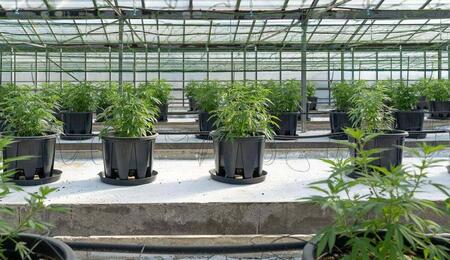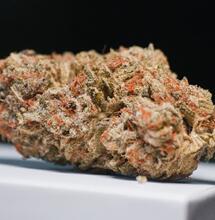Indica VS Sativa

The common way to label the different types of cannabis is Indica and Sativa. The distinction describes some of the main characteristics of the two different flowers, including plant anatomy and effects. For example, Indica plants are usually shorter and bushier plants and their effects are more sedative and analgesic, so they can be perfect for treating chronic pains or insomnia. On the other hand, Sativa strains grow taller and have slimmer stems; they are usually very stimulating, can improve the mood or can stimulate the brain with new ideas and creativity (so, who knows, if you smoke some good Sativa weed, you might even become the next Pablo Picasso)! While it's good to have this classification in mind, it's also true that not all Indica cultivars are superior sedatives, nor that all Sativa cultivars are superior stimulators.
The distinction between Indicas and Sativas originally comes from botany where Cannabis Indica and Cannabis Sativa stand as two different types of cannabis plants. Normally, the two species of cannabis have many traits in common, but they also have specific characteristics that help us tell them apart. For instance, Indica plants are shorter and stockier with a woody stalk, and the leaf is also different; it's darker and broader. In contrast, Sativa plants are taller, the stem is fibrous and more elongated, while the leaf is usually skinny and light green.
But even for these distinct physical features of Indica and Sativa, there isn't a 100% scientific consensus. Some researchers claim that the differences are due to human intervention and not evolution and adaptation to the original environment where they appeared in nature.
Below is more on the specific traits and effects of both Indica and Sativa cannabis.
Indica Plants
In most cases of cannabis Indica plants, the following applies:
- Indica cultivars have significant THC content, but they can also be rich in CBD content.
- If sufficient time is left for some of the THC content to morph into CBN, you get an even more sedative and medicinal Indica weed.
- The cannabinoid mixture in Indica plants is superior for treating pain and has a full-body effect that results in deep relaxation and sleepiness.
- Indica is more likely to cause couch lock, thus is generally better to use it as a stay-at-home weed. Because of the more lethargic effect, it's also recommended to use Indica later in the day.
- Some of the most famous landrace Indica strains originate in the Middle East, such as Afghani (aka Pure Afghan) from Afghanistan and the Hindu Kush strain from the Hindu Kush mountains between Afghanistan and Pakistan.

Sativa plants
In most cases of Sativa plants, the following applies:
- Cannabis sativa plants usually have higher THC levels and are prone to give the user a more energizing and happy high.
- Sativa stimulates the brain, thus it can be a great weed to brainstorm ideas, or use it for your creative process.
- As the more energizing type of weed, Sativas are better to use for social life, and they're usually okay for daytime use.
- Sativa also has a range of medicinal uses, although bit different from Indica. Strains can be used to treat mood disorders, depression, anxiety, or as an appetite stimulant.
- Some of the most famous landrace sativa strains originate from warmer climates, such as Thai strains from Southeast Asia and Durban Poison from Africa.
Hybrid Plants
As much as the individual traits are valid in the Indica/Sativa classification of Cannabis, it is important to note that some Sativas may appear to behave like Indicas, and vice versa, some Indicas may exhibit Sativa-like characteristics.
Things between Sativa and Indica plants become even more "complex" as both growers and nature have created hybrid plants that contain genetics from both cannabis species. Some of the priorities in human-bred hybrids are to create cultivars which grow quicker, generate bigger yields, and that subtly balance out the energizing and calming effects of Cannabis. Therefore, many of the hybrid strains available in dispensaries initially generate an uplifting effect before they push you down.

While there are various hybrids out there, it's safe to say that a lot of them are either Indica-dominant or Sativa-dominant, as demonstrated in the lists below.
List of Indica Heavy Strains
- Purple Kush (genetic profile: Hindu Kush x Purple Afghani, pure Indica; average THC content of 22%)
- Bubba Kush (genetic profile: OG Kush x unnamed Northern Lights phenotype; THC content ranging from 15% to 22%)
- Blackberry Kush (genetic profile: Afghani x Blackberry or DJ Short Blueberry, roughly 80% indica; up to 20% THC level)
- Skywalker OG Kush (genetic profile: Skywalker x OG Kush, 85% Indica; THC level range between 20 and 25%)
- Strawberry Banana (genetic profile: Strawberry Bubblegum x Crocket's Banana Kush, 70% Indica; high THC level of 26%).
- Northern Lights (genetic profile: most likely it's a Thai x Afghani landrace strains cross, roughly 90% indica; most potent phenotypes rock 33% THC)
- Purple Punch (genetic profile: Larry OG x Granddaddy Purple, 18-20% THC)
List of Sativa Heavy Strains
- Acapulco Gold (genetic profile: comes from Acapulco, Mexico, but its genetics remain unknown; can have as much as 23%)
- Sour Diesel (genetic profile: Chemdawg x Super Skunk, 90% Sativa; THC content range between 18 and 25%)
- Amnesia Haze (genetic profile: Haze x Thai, Hawaiian, and Afghani landrace strains, roughly 70% sativa; average THC content is 25%)
- Super Silver Haze (genetic profile: Skunk #1 x Northern Lights x and Nevile's Haze, 80% Sativa; relative THC content of 18%)
- Green Crack (genetic profile: Skunk #1 x possibly Afghani landrace; THC content averages 16%)
- Maui Waui (genetic profile: originated as an outdoor crop on the island of Maui and quickly spread to all Hawaiian islands; can have as much as 23%)
- Strawberry Cough (genetic profile: Erdbeer or Original Haze x Indica bred by Kyle Kushman, 80% Sativa; around 25% THC content)
Final Thoughts
We all get different results from smoking weed. Some people better enjoy Indica-leaning strains and others are happier with Sativa strains. It depends on the user to explore and find the strains that works best for them. In medicinal uses, it's important to use strains that target specific symptoms.
Growing is another important aspect. While there are some general directives on cultivating Sativa or Indica cannabis, there are also specific tips how to proceed with each individuals strain. The differences in growing can range from employing special techniques to how much nutrients to use, or how to regulate light or temperature in the grow room. It may take years and multiple grow attempts to hone the necessary skills and become an expert for just a few different Indica or Sativa cultivars.
Also read on Soft Secrets:
- Everything You Need to Know About Cannabis Landrace Strains










